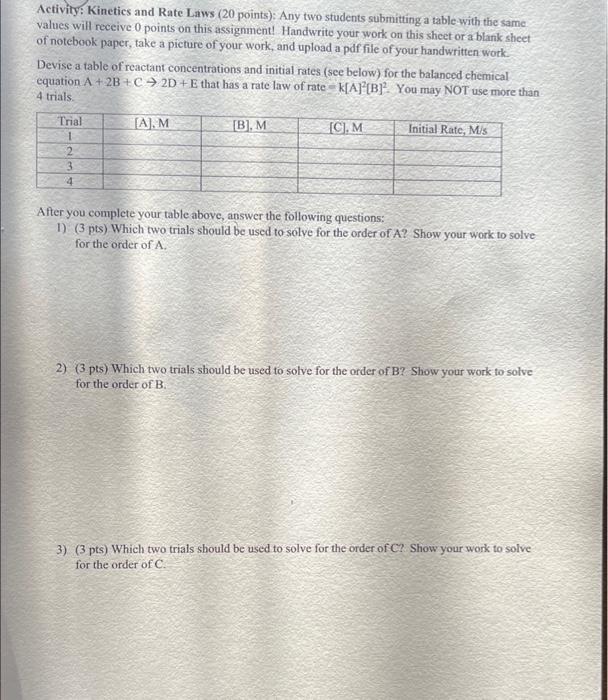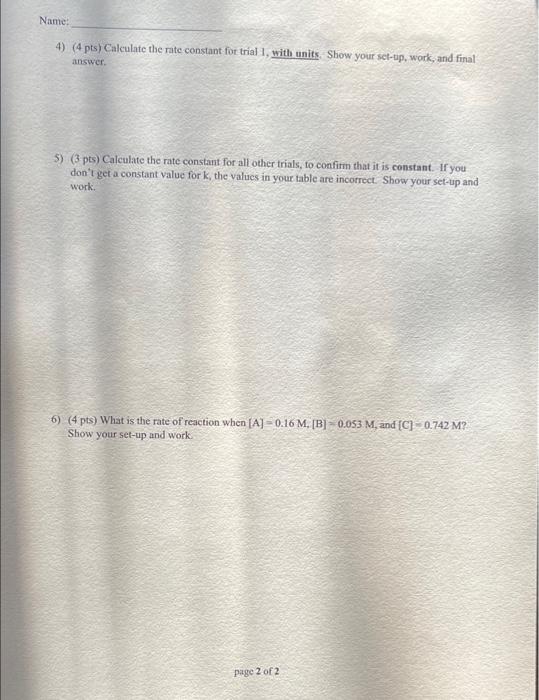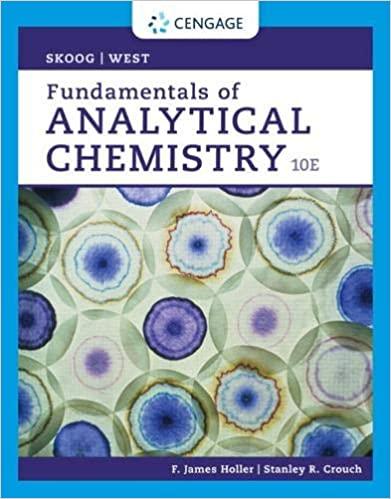Activity: Kinetics and Rate Laws (20 points): Any two students submitting a table with the same values will receive 0 points on this assignment! Handwrite your work on this sheet or a blank sheet of notebook paper, take a picture of your work, and upload a pdf file of your handwritten work Devise a table of reactant concentrations and initial rates (see below) for the balanced chemical equation A + 2B+C 2D +Ethat has a rate law of rate k[A[B]. You may NOT use more than 4 trials Trial [A].M [B]M [C].M Initial Rate, Mis 1 2 3 4 After you complete your table above, answer the following questions: 1) (3 pts) Which two trials should be used to solve for the order of A? Show your work to solve for the order of A 2) (3 pts) Which two trials should be used to solve for the order of B? Show your work to solve for the order of B 3) (3 pts) Which two trials should be used to solve for the order of C? Show your work to solve for the order of C. Name: 4) (4 pts) Calculate the rate constant for trial 1, with units Show your set-up, work, and final answer 3) (3 pts) Calculate the rate constant for all other trials, to confirm that it is constant. If you don't get a constant value fork, the values in your table are incorrect. Show your set-up and work 6) (4 pts) What is the rate of reaction when [A] -0.16 M, [B] = 0.053 M. and [C] -0.742 M? Show your set-up and work. page 2 of 2 Activity: Kinetics and Rate Laws (20 points): Any two students submitting a table with the same values will receive 0 points on this assignment! Handwrite your work on this sheet or a blank sheet of notebook paper, take a picture of your work, and upload a pdf file of your handwritten work Devise a table of reactant concentrations and initial rates (see below) for the balanced chemical equation A + 2B+C 2D +Ethat has a rate law of rate k[A[B]. You may NOT use more than 4 trials Trial [A].M [B]M [C].M Initial Rate, Mis 1 2 3 4 After you complete your table above, answer the following questions: 1) (3 pts) Which two trials should be used to solve for the order of A? Show your work to solve for the order of A 2) (3 pts) Which two trials should be used to solve for the order of B? Show your work to solve for the order of B 3) (3 pts) Which two trials should be used to solve for the order of C? Show your work to solve for the order of C. Name: 4) (4 pts) Calculate the rate constant for trial 1, with units Show your set-up, work, and final answer 3) (3 pts) Calculate the rate constant for all other trials, to confirm that it is constant. If you don't get a constant value fork, the values in your table are incorrect. Show your set-up and work 6) (4 pts) What is the rate of reaction when [A] -0.16 M, [B] = 0.053 M. and [C] -0.742 M? Show your set-up and work. page 2 of 2








